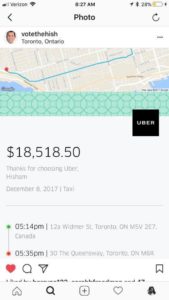
Gabriel Smith, vice president of solution strategy and innovation, Pricefx
Since Halloween candy has been in stores and Spirit shops have popped up, it seems appropriate to dust off some pricing “horror stories.” Some are old, some are new, but they are all cautionary tales of what can go wrong in pricing at industry-leading companies.
Zappos, Amazon, McDonald’s, and Uber are all quite good at pricing but have committed some horrific sins in the past. Read on to find out what $1.6 million, $23.7 million and $14,400 have in common.
Let’s start with one of the highest-impact examples of pricing horrors I have read about from the archives. In 2010, Zappos.com reported that a manual error in how its pricing rules were entered into its system meant that all the products on its website were marked down to $49.95 if the price was over that.
By the time Zappos discovered and fixed the error, it had lost $1.6 million in discounts for orders that had booked in that time. Realizing that it was its own fault, and being very customer centric, Zappos did the right thing and fulfilled these orders at the $49.95 price point, avoiding what would have been a PR bloodbath.
Amazon learns from a pricing blunder
Zappos parent company, Amazon, has sometimes been more “naughty than nice” when a mistake like this has occurred. One example is a 48-hour glitch at Amazon in 2010 whereby a series of Marvel graphic novels were marked down from as high as $125 to $15.
When Amazon found and fixed the issue, it cancelled many of the orders, but allowed some customers one copy each at the lower price. When enough customers raised a fuss, Amazon issued $25 gift cards to pacify them, but not until there was a fair amount of carnage on social media.
Amazon has learned from this mistake: recently there as an incident where users reported buying a $13,000 camera lens and $5,000 camera for $94.48 and the orders were fulfilled. A more horrific mistake, but this was the proper response.
The last example at Amazon is the biggest single item pricing fail I have ever seen. An academic book about flies (no lords involved) was priced at $23.7 million. While I am sure you are familiar with “the race to the bottom” with algorithmic pricing, this was a race to the top: A battle of the algorithms, with each one tracking the other and ratcheting up the price in a positive feedback loop, unsupervised, until someone finally caught on.
Stories like this could become more common going forward. Amazon must be especially careful as there are a number of sites that track and flag price drops like camelcamelcamel.com, bgr.com, etc.
The risks of algorithmic pricing
Speaking of algorithmic pricing, let’s talk about another heavyweight and a pricing massacre, namely Uber. While surge pricing has now been accepted by users of ride-hailing platforms, there have been some major missteps along the way. In 2017, Uber charged a man in Toronto ~$14,400 US ($18,518.50 CAN) bill for a 3.5-mile, 20-minute ride.

Uber’s pricing error.
When the passenger contacted Uber, the company originally refused to waive the surge fee. After catching a lot of social media flack, Uber eventually refunded the passenger and issued the following statement “There was an error and we have provided a full refund. We sincerely apologize to this rider for his experience. We have safeguards in place to help prevent something like this from happening and we are working to understand how this occurred.”
This year, Uber Eats rolled out a very confusing fee structure with 3 different fees. There used to be just one booking fee, which is simple and transaparent. Now there is a delivery fee and a separate service fee which apply to all orders, and a small order fee if your order is below $10. The fees generally add up to the previous booking fee and I suppose the idea is to give more control over what to charge in different situations, but it can be misleading and I would argue that simpler is better.
How to get a free burger at McDonald’s
Hungry for more? Let’s talk McDonald’s. In April 2019, a video went viral showed how to exploit a pricing error in a McDonald’s self-service machine to get free food. The hack involved adding 10 hamburgers for $1, then removing the meat, discounting them by $1.10 to -$.10 and meant there was enough to get a $1 burger for free. While this is a pretty involved procedure that creates a ton of waste (10 buns with no burgers), it is yet another example of a pricing error which could be exploited, resulting in losses and not putting the brand in a good light.
So, what can we learn here as retail and ecommerce professionals? There are 4 key takeaways:
- Make sure you have the proper checks and balances in place in your systems and process to establish guardrails that keep pricing in the “common sense” zone. These rules can be based on a number of factors like price increase/decrease % caps, margin floors, competitive positioning, etc.
- If a mistake is made, closely weigh the short-term benefit of cancelling orders or sticking with it versus the potential negative PR you could get. Think about the customer and the perception of your move. Many times, the potential damage to your brand outweighs the short-term loss from the mistake. In the Zappos example, the mistake resulted in positive PR as Zappos came across as extremely customer-centric.
- Keep your pricing (especially fee structures) as simple and transparent as possible. This is beneficial to consumers and means you are less likely to commit errors that end up as horror stories.
- Invest in modern, easy-to-use pricing systems where you can simulate the impact of changes before making them live. Beyond just preventing errors and saving you from negative customer interaction and PR, these systems can optimize prices. Gains of 1-5% of sales in pure profit are common by optimizing prices using big data, competitive prices, outside sources, and the combination of AI, algorithms and rules like % increase caps, margin floors, and competitive positioning.
Pricefx offers price-management and configure-price-quote software.
Favorite